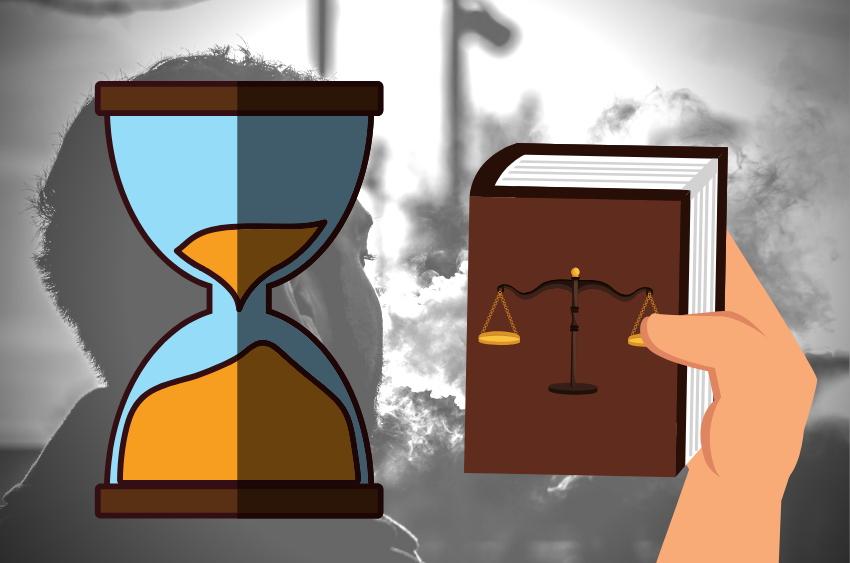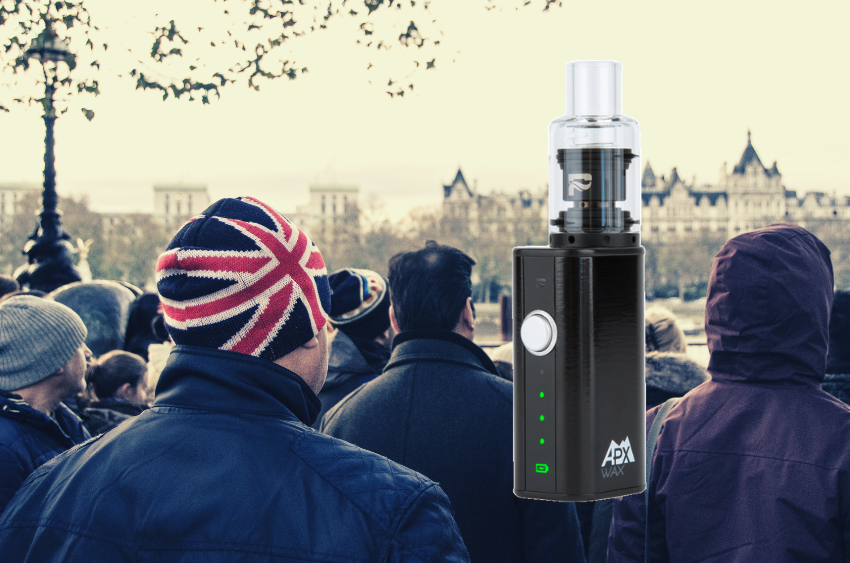Vaping Regulations in the US and UK - Things to Know
Vaping Regulations are constantly updated and debated by the FDA. This post is up to date and offers the information needed to understand US and UK vaping regulations.
Vaping remains a relatively young industry, which means that it is not well understood by many. This also means that laws and regulations around e-cigarettes are continually evolving, as new research comes to light, and as various interested parties put pressure on legislators.
For these reasons we now find that there is a substantial difference between vaping regulations in the UK and the US. Knowing the regulations applicable to you is crucial for anyone whether a wholesaler, retailer or consumer of vaping products. In this article we will review the key aspects of each, and look at the factors and reasoning behind the rules that have come into place.

The History of Vaping and Regulations
E-cigarettes were invented in China in 2003 and then introduced commercially into the UK and the US two years later. Initially this new invention was treated with a heavy dose of suspicion by lawmakers in both countries. There were fears around the short and long-term health effects of vaping, as well as concerns that e-cigarettes may prove to be a “gateway” to smoking cigarettes for teenagers and young people.
This meant to both countries instituting strict regulations around the use and sale of e-cigarettes and associated products. In the US, legal proceedings across multiple courts and jurisdictions in 2010 fought out the classification of e-cigarettes, as to whether they ought to be classified as a tobacco product or a drug and medical product. Finally, in early 2011, the District Columbia Circuit appeals court blocked the final appeal on the matter, meaning e-cigarettes were to be considered as tobacco products.

Vaping Regulations in the UK
The UK has since come to a point of much greater acceptance of vaping. In recent years, major Government and health institutions in the UK have concluded that, although the long-term effects of vaping remain to some extent unknown, vaping is much healthier than smoking cigarettes and represents a useful tool to get smokers to quit.
The London Royal College of Physicians, for example, released a report in 2016 stating that vaping is up to 95% less harmful than smoking cigarettes, and recommended the use of e-cigarettes to help people quit smoking. This proceeded a review the previous year by Public Health England which had similar findings and was followed in 2017 by another study which compared the levels of toxins and carcinogens present in smokers and former smokers who were now using e-cigarettes. The latter study found that the ex-smokers who were now vaping exclusively showed significantly lower levels of toxic chemicals and carcinogens compared to the smokers. Legislators in the UK followed suit with politicians advocating to relax regulations relating to both advertising of vaping products and vaping in public places.
The UK implemented a comprehensive set of regulations in 2016, called the Tobacco Products Directive (TPD). Despite the misleading name, these laws do not relate to tobacco-based products such as cigarettes, cigars and chewing tobacco, but rather “nicotine-containing e-cigarettes and refill containers”. According to the UK Government, the rules were implemented with an aim to deliver minimum standards of safety and quality, full provision of information to consumers, and to discourage children from starting to use e-cigarettes.
The regulations, which came into full effect on 20 May 2017, include these requirements:
- E-cigarette tanks must be no greater than 2mL capacity
- E-liquid refill containers you be sold at no greater volume than 10mL
- E-liquids can be no stronger than 20mg/ml in nicotine
- All nicotine products should be in child-resistant and tamper evident packaging
- All products must carry labelling and warnings in accordance with requirements
- All businesses selling vaping products must be registered with the UK government
When you buy quality e-liquids you can be sure they comply with all regulations. In fact, buying vaping products from any licensed seller in the UK should guarantee that what you buy complies with these regulations, giving you peace of mind.

Vaping Regulations in the US
Until 2016, when jurisdiction for e-cigarettes and associated products was brought under the FDA (Food and Drug Authority), regulations on vaping varied widely from state to state. Under its new authority, the FDA implemented a range of regulations around e-cigarettes, including restrictions on the advertising of e-cigarettes, labeling requirements, and measures to prevent minors from buying e-cigarettes such as requiring a photo ID at sale and prosecution of vendors found to sell to minors. The FDA also banned an advertisement of any e-cigarettes or e-liquids as being safer than tobacco products unless they have been granted special “modified risk tobacco product” (MRTP) status. To date, no products have been granted this status. Some critics have commented that these measures, in particular, may be a reflection of the strong tobacco lobby in the USA, and its wish to suppress competition.
In May 2018, the FDA further tightened restrictions around packaging of e-liquids, citing concerns that some products may be branded to look like food or beverage products. In particular, they expressed concern that products may be packaged to look like food and beverages which appeal to children, such as juice boxes and candy. Accordingly, such products were charged with false advertising under the Tobacco Control Act of 2009 and the Food, Drug and Cosmetic Act.
The introduction of Pax Juul e-cigarettes in 2015 greatly changed the vaping landscape in the US. This new type of e-cigarette, known as the JUUL, is innovative both in terms of its presentation and the technology it uses. Its sleek design is much more streamlined compared to previous e-cigarette designs, and resembles a USB flash drive in appearance. In terms of technology, it uses nicotine salts as its key ingredient, under a unique patent for nicotine salt preparation. Each cartridge, or JUUL pod, delivers around 200 hits and are available in a variety of flavors, and the JUUL can be charged at a magnetic USB deck.
The company is a self-proclaimed “disruptor” of Big Tobacco, and their CEO has said that their goal is to eliminate smoking globally. They want to provide a viable, attractive alternative to smoking harmful cigarettes, which they may have done with their slick Pax Juul e-cigarettes. Pax Juul now captures over 70 percent of the US e-cigarette market, and their first funding round attracted over $650 million in investment. The popularity of JUUL e-cigarettes has also seen them attract criticism as encouraging teenagers to become addicted to nicotine. They have indicated that they will make moves to ensure their devices are not encouraging young people to pick up the habit – more on this below.

Predictions for the Future
As more research is conducted into the health effects of vaping, and findings are released, we can assume that restrictions will begin to ease. In particular, as more evidence is collected to support e-cigarettes as a tool to quit smoking, we can hope to see official recognition of this in US, which could change its classification from a tobacco product to a drug and medical device. If this were to be the case, this could seriously impact the restrictions currently placed on the use, sale and advertisement of vaping products and accessories in that country.
We can also expect to see moves made by law-makers to protect children from using e-cigarettes, in light of more and more people expressing concern over the potential harms which vaping poses for children and minors. Concerned groups in the US cite high numbers of middle and high school students using e-cigarettes, and larger numbers using these compared to tobacco cigarettes. Flavored e-liquids have already been targeted by legislators in the US, who are concerned they appeal particularly to young people.
Another concern expressed by law makers and lobby groups in the US in particular is around the risk that young children may accidentally poison themselves with e-liquids or other vaping equipment. If a small child was to pick up a cartridge of e-liquid, thinking it was something else, and swallow it, they could suffer severe nicotine poisoning.
As a result of all of these concerns, we can expect to see laws introduced in the future to protect children and teenagers from using e-cigarettes. Such laws could include greater penalties for vendors selling e-cigarettes, e-liquid or other vaping supplies to minors. There is also the potential for age authentication features to be installed on vape devices in order to prevent minors from using them. This is something which leading US e-cigarette manufacturer Pax Juul has already indicated they are working on. The company stated that they are developing technology which will connect the vaping equipment to an app which prevents underage use, as part of their commitment to discouraging teen use of their products.
We can also expect to see further moves to ensure that packaging is not printed in such a way as to be attractive to children, perhaps even something along the lines of the plain packaging laws for tobacco cigarettes which have been implemented in countries like Australia.
Globally, greater understanding of the impacts of e-cigarettes should lead to better access to the product, notably in countries such as Brazil, Uruguay and Canada, where vaping products remain effectively illegal.
Related Blog Posts
Vaping Nicotine in Australia - Laws and Guidance
Canada Releases Updated Medical Cannabis Regulations
Traveling plus Flying with a Vape Guide
Blog Categories
- Home
- Industry News
- Vaporizer Reviews
- Dry Herb Vape Tutorials & FAQ
- Wax Pen Vape Tutorials & FAQ
- Oil Vape Pen Tutorials & FAQ
- Vaping Guides & Information
- Dabbing FAQ & Guides
- Smoking Pipe Tutorials
- NY Vape Shop Listicles
- Vape Pen Comparisons
- Vape Shop How To Articles
- Vape Shop Buyers Guide
- Vape Pen Basics
- Herb Grinder Reviews
- Dry Herb Vaporizer Reviews
- Oil Vape Pen Reviews
- Wax Pen Reviews
- Box Mod Vape Reviews